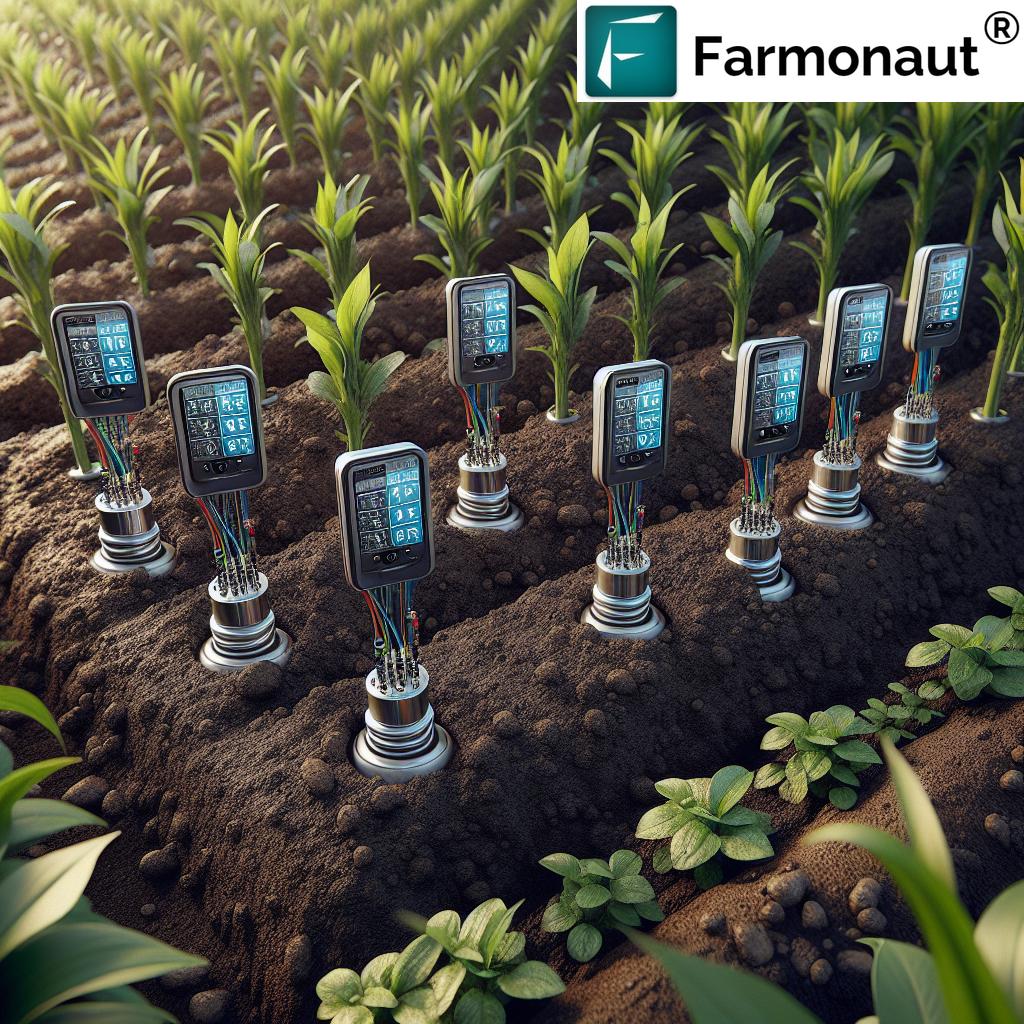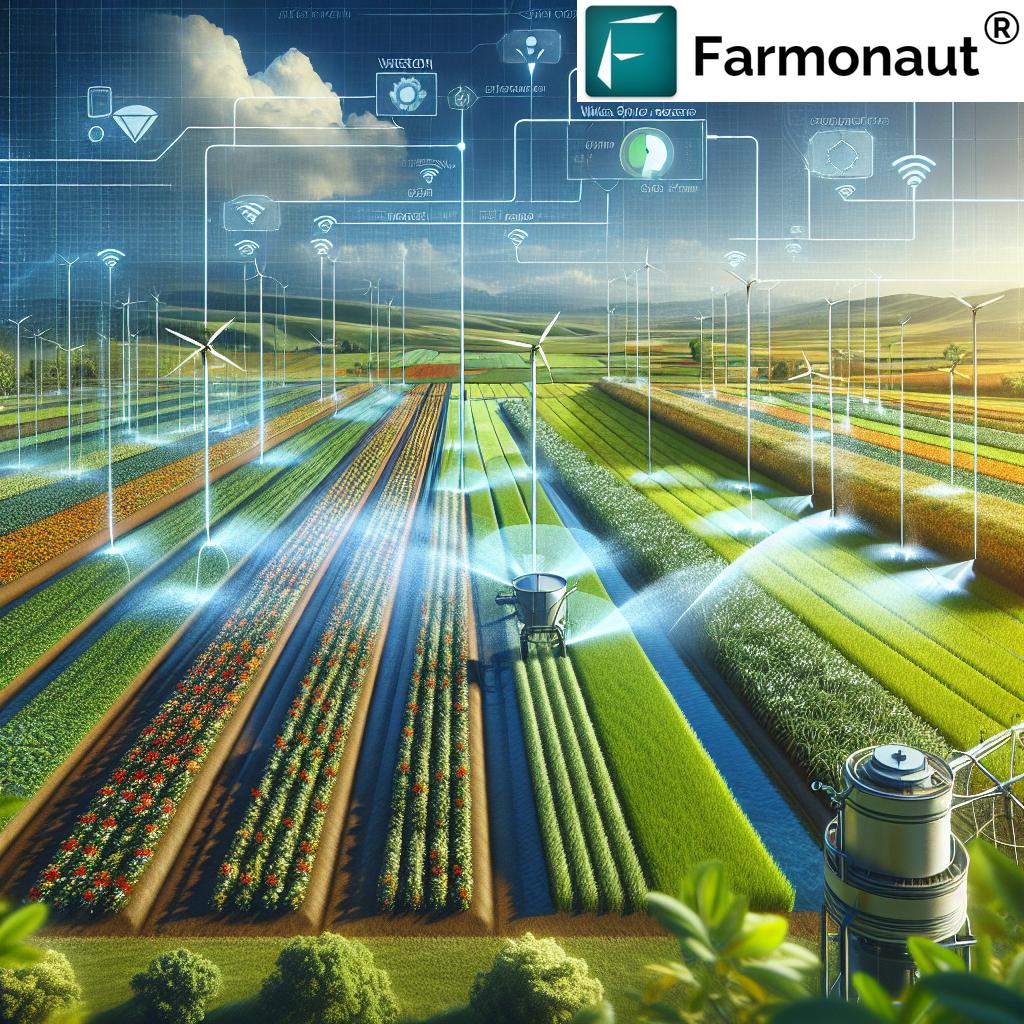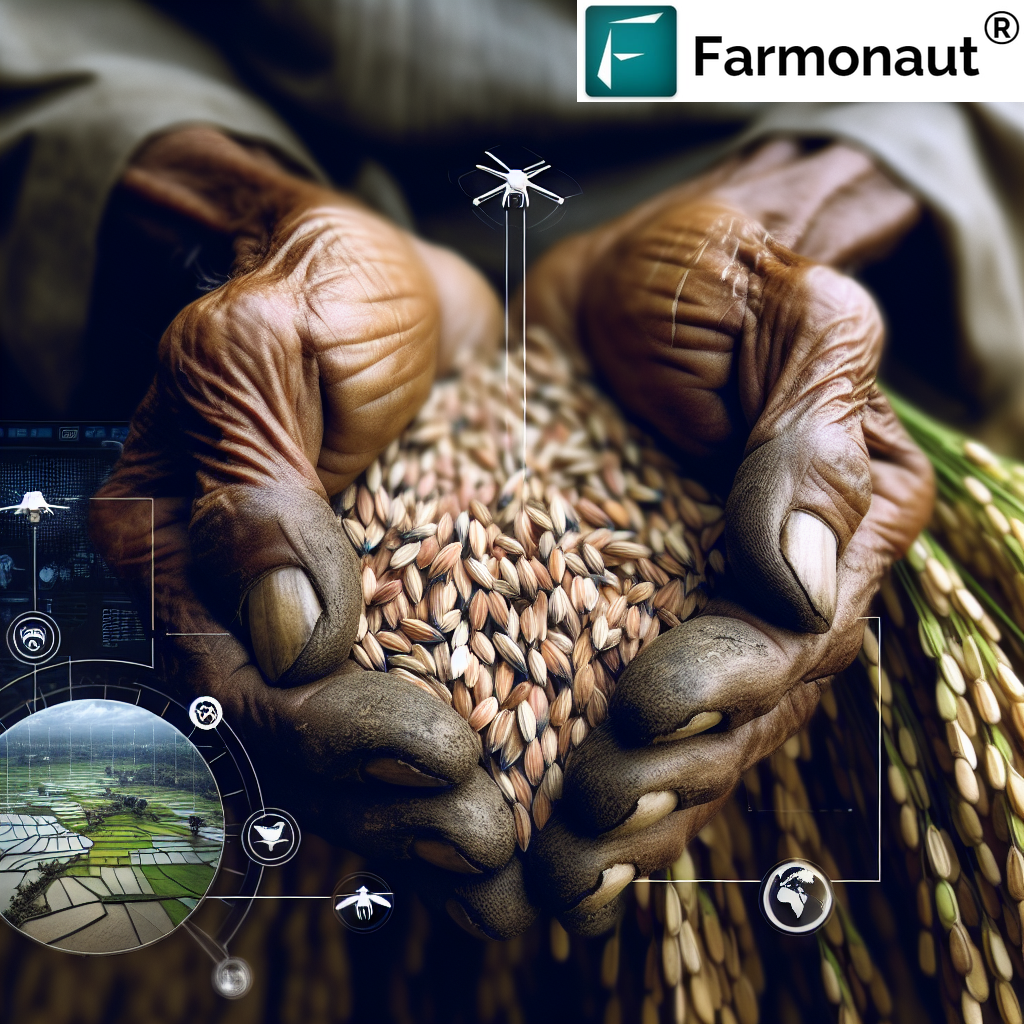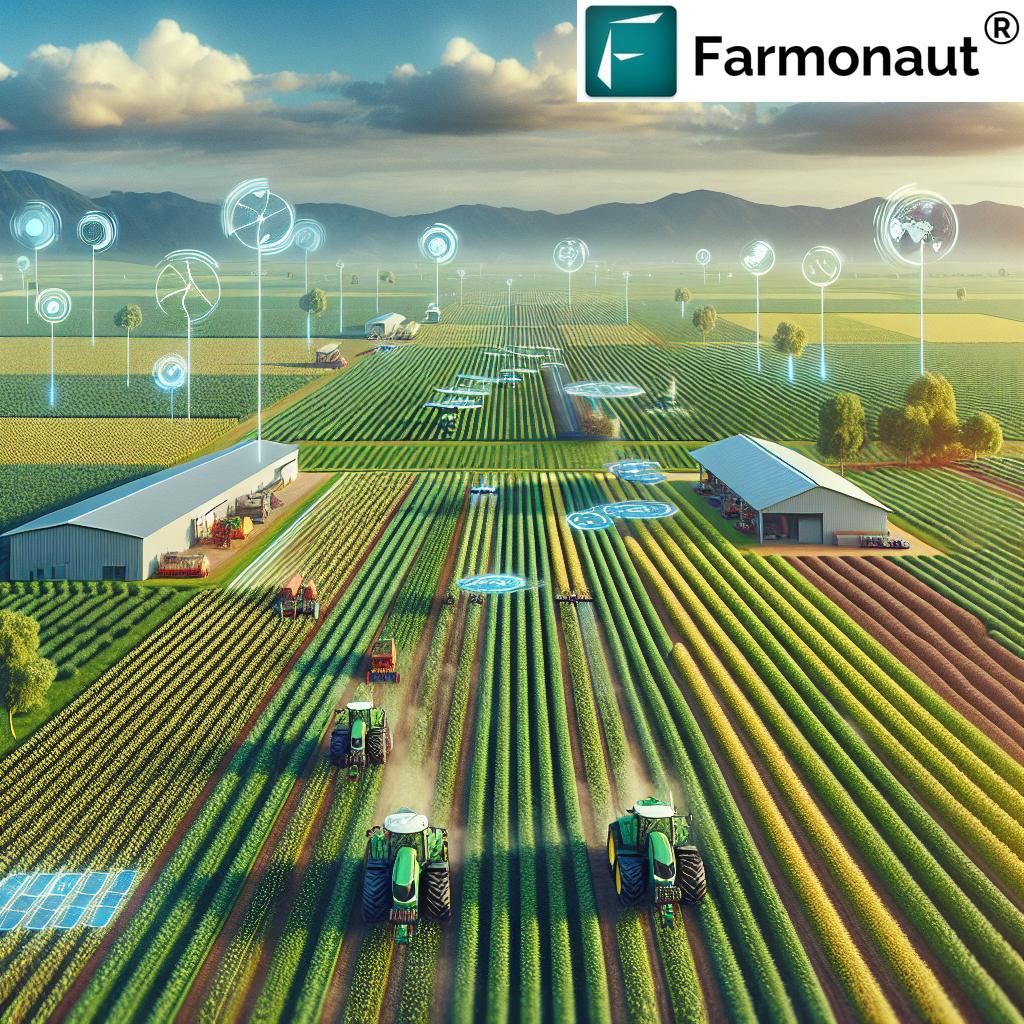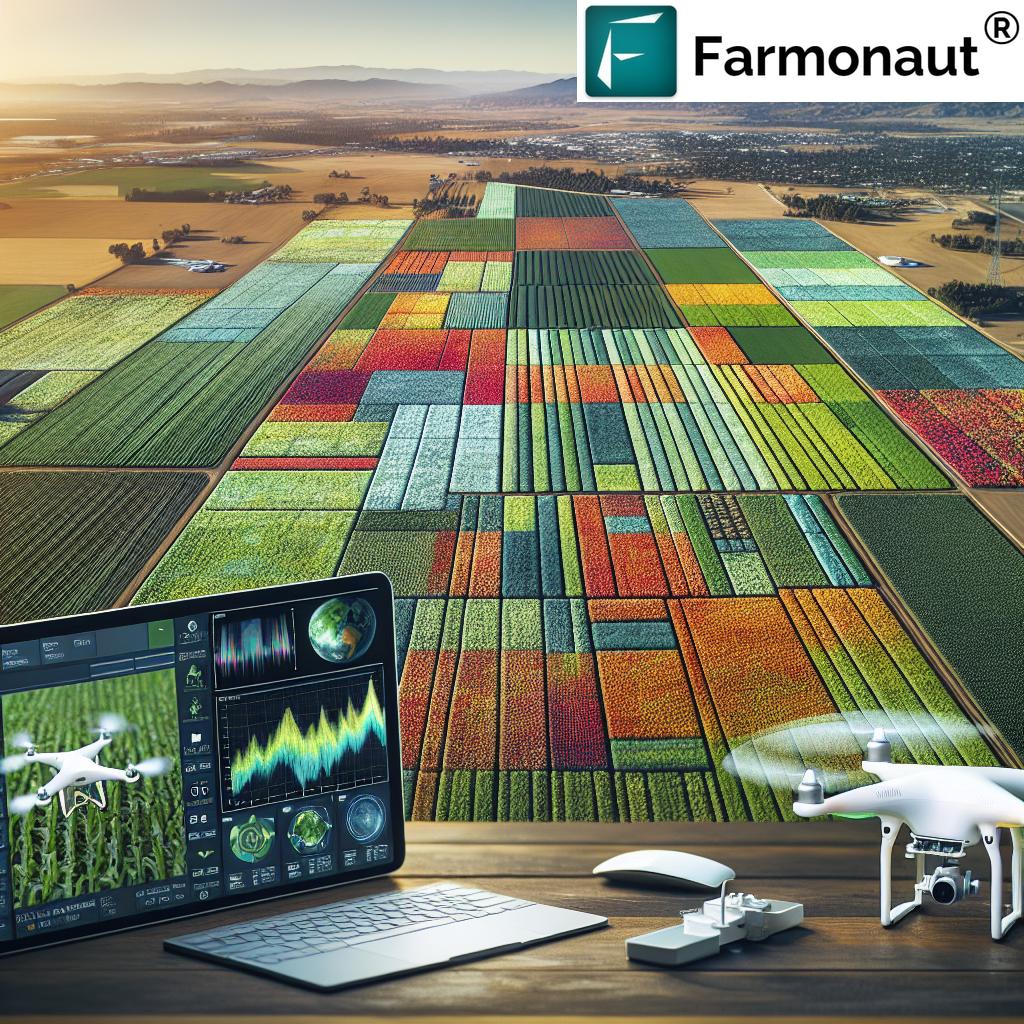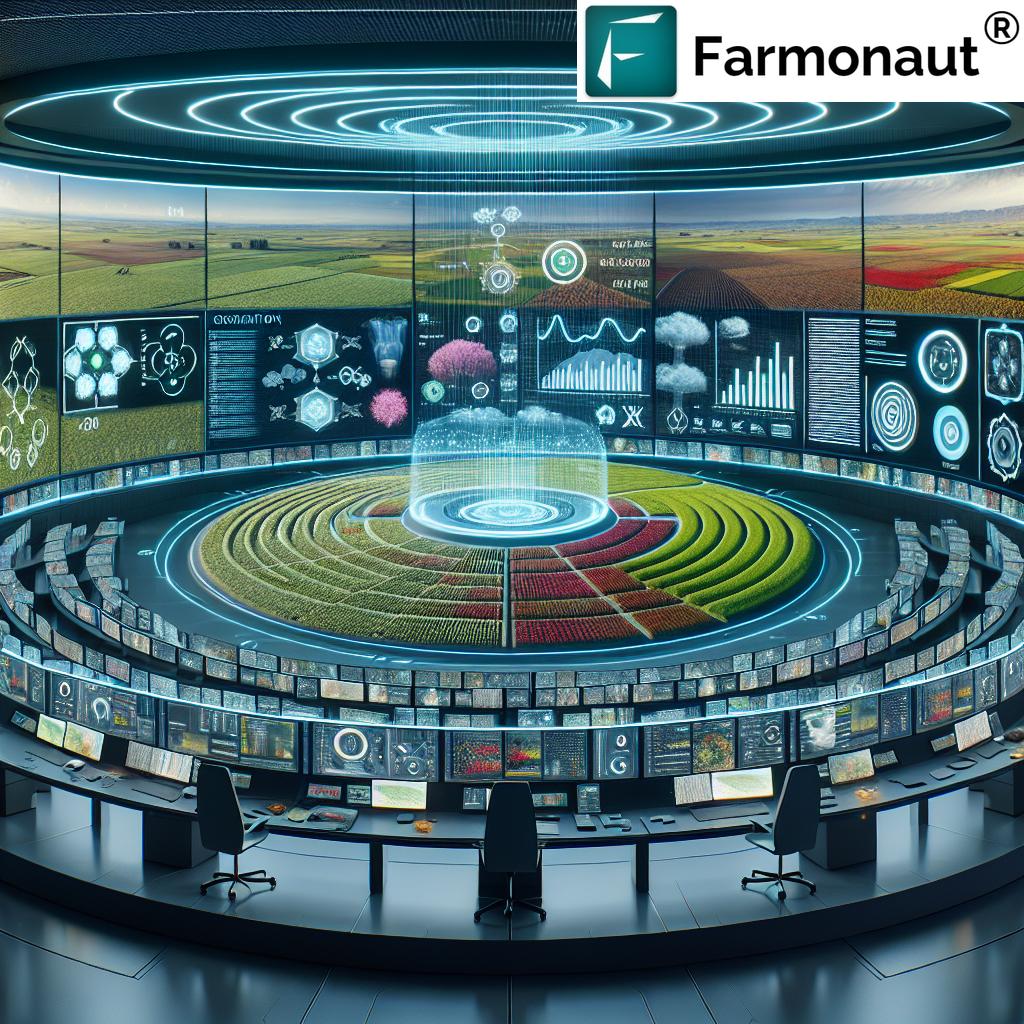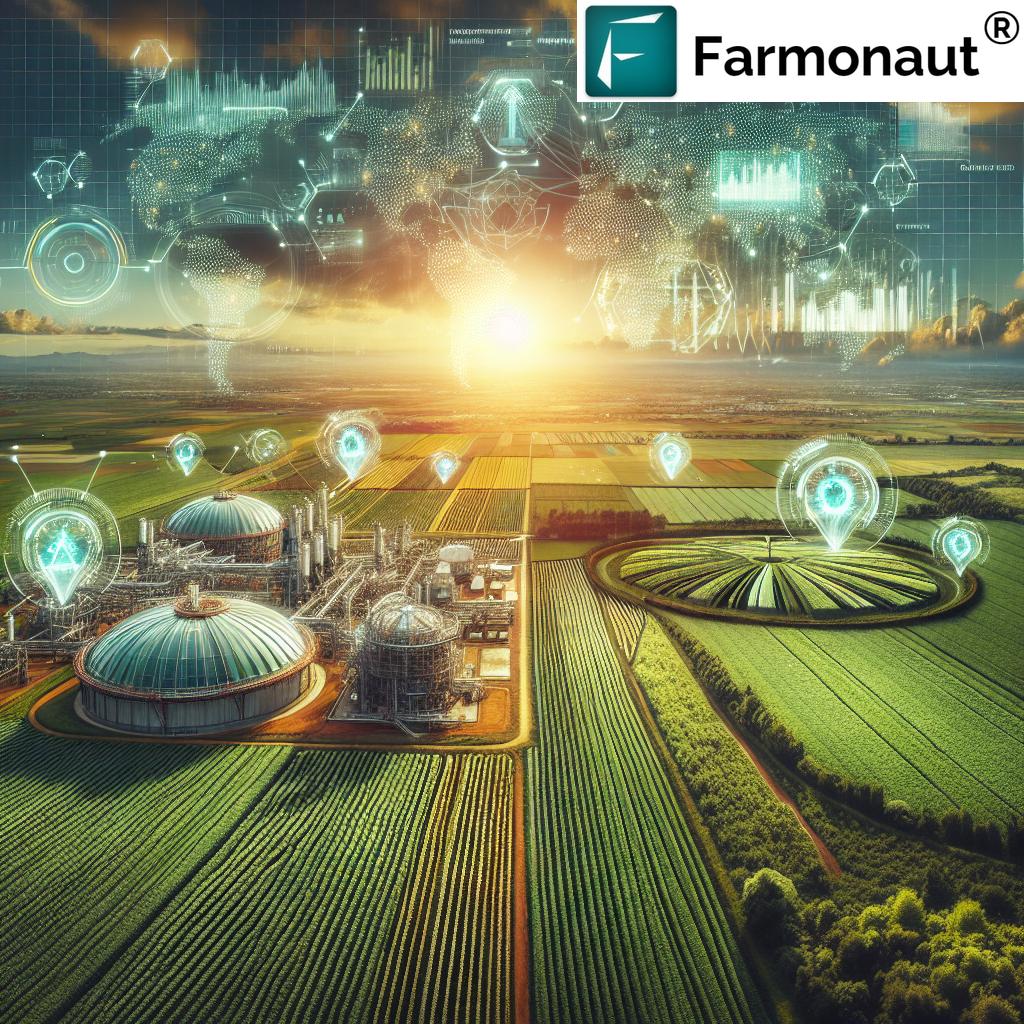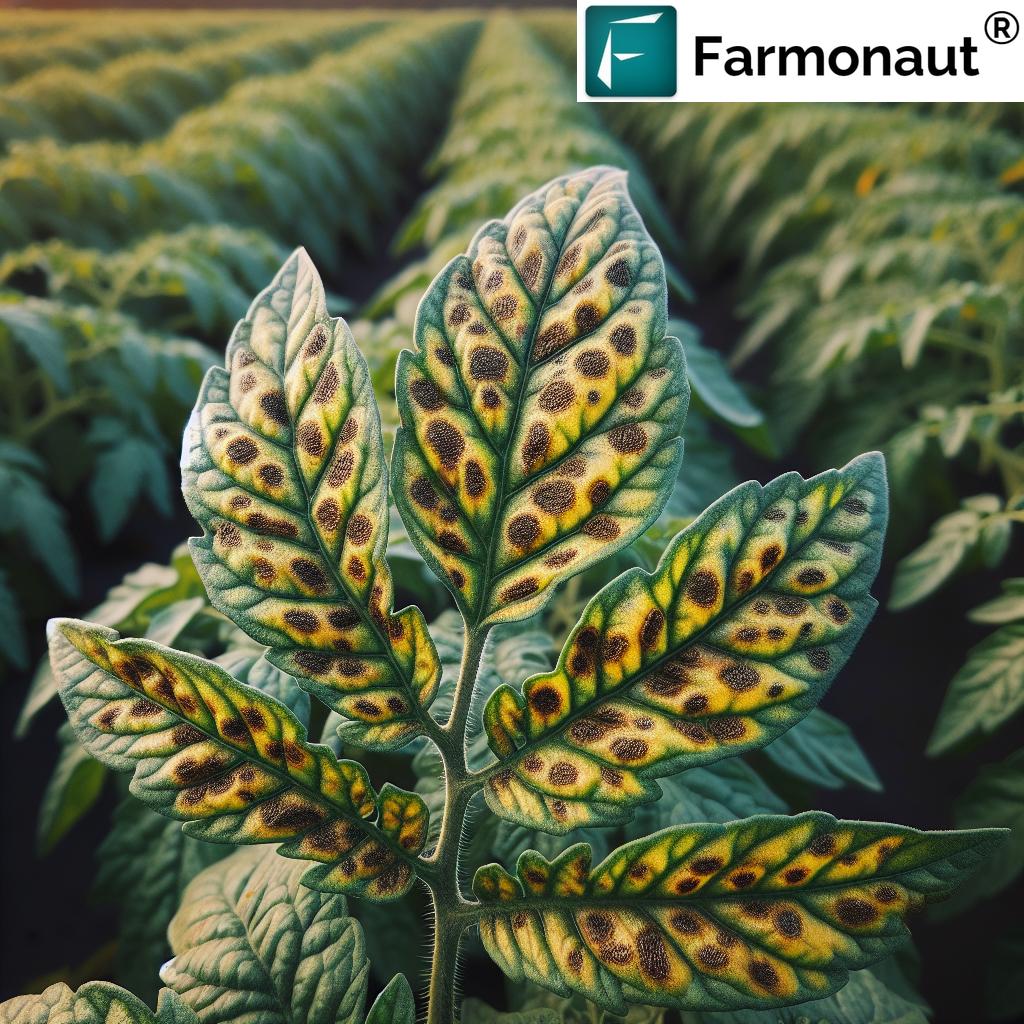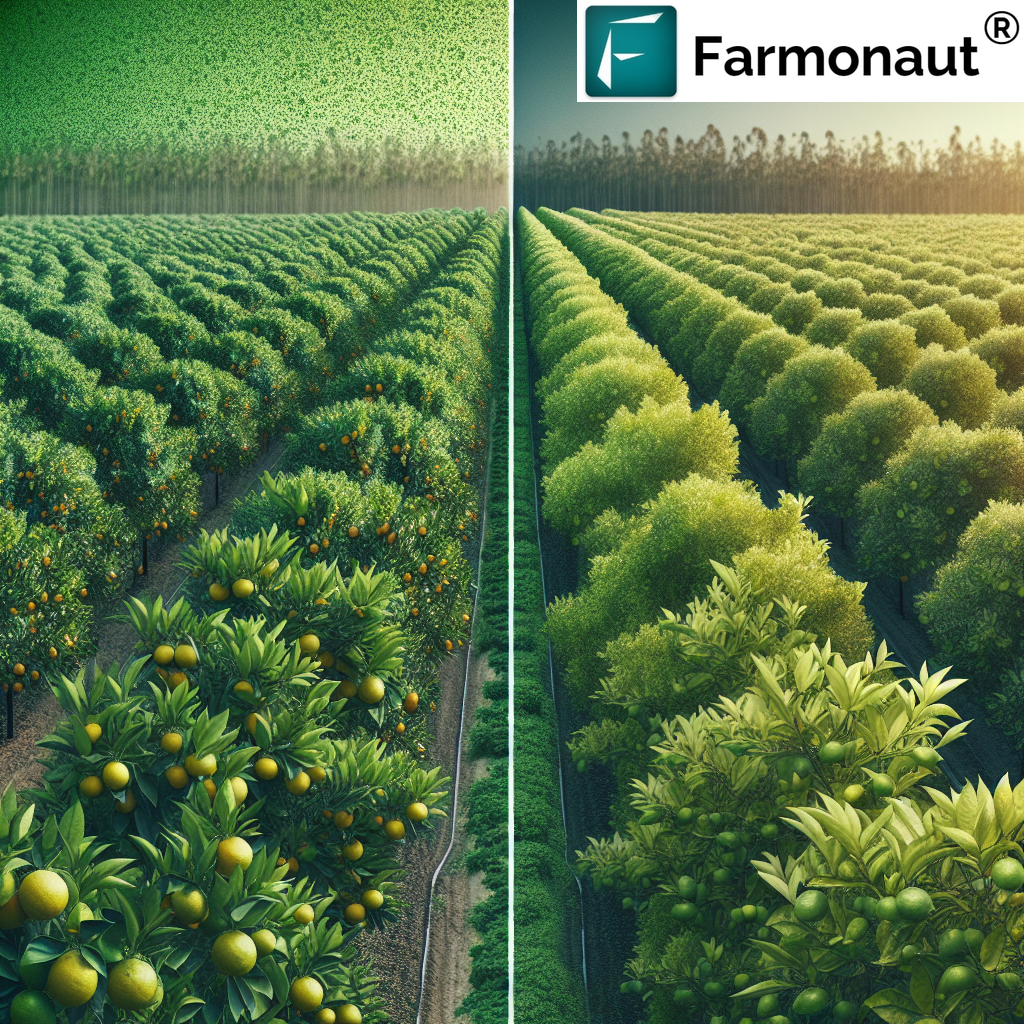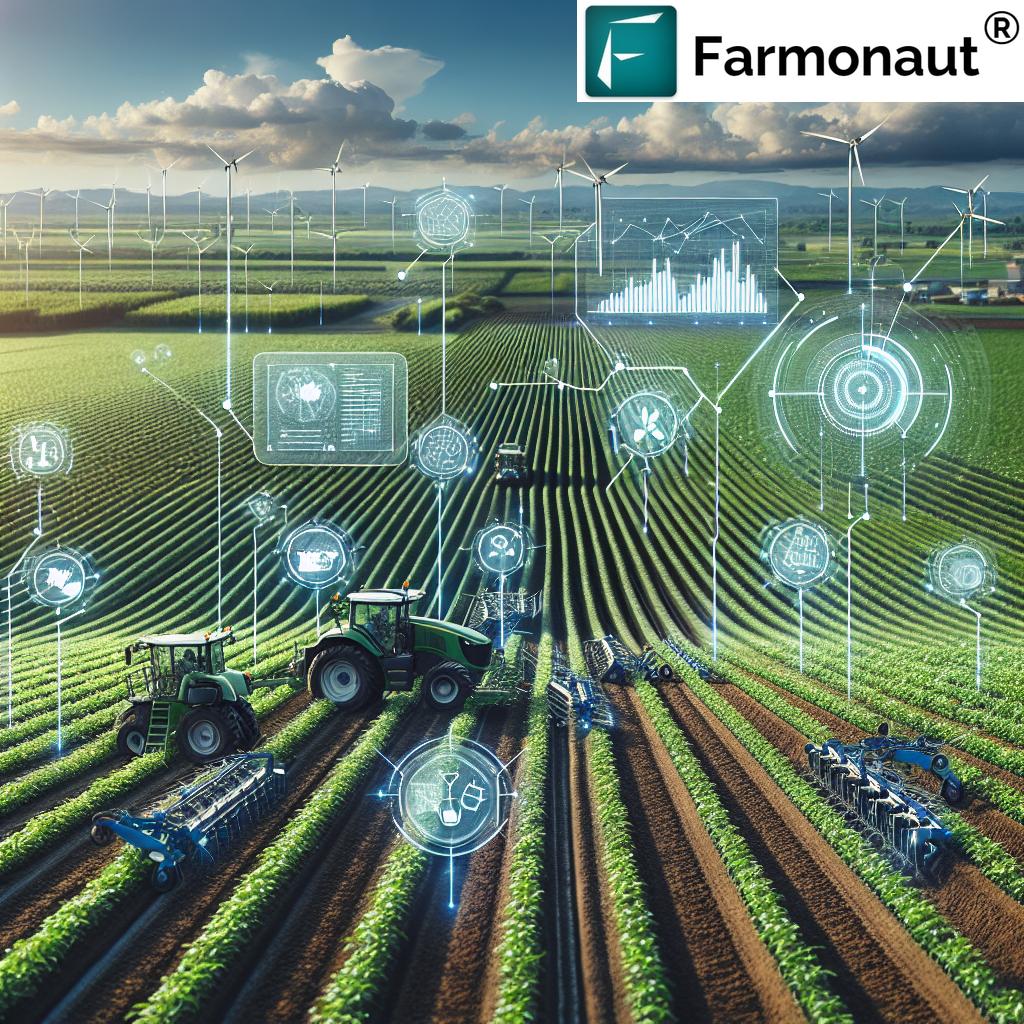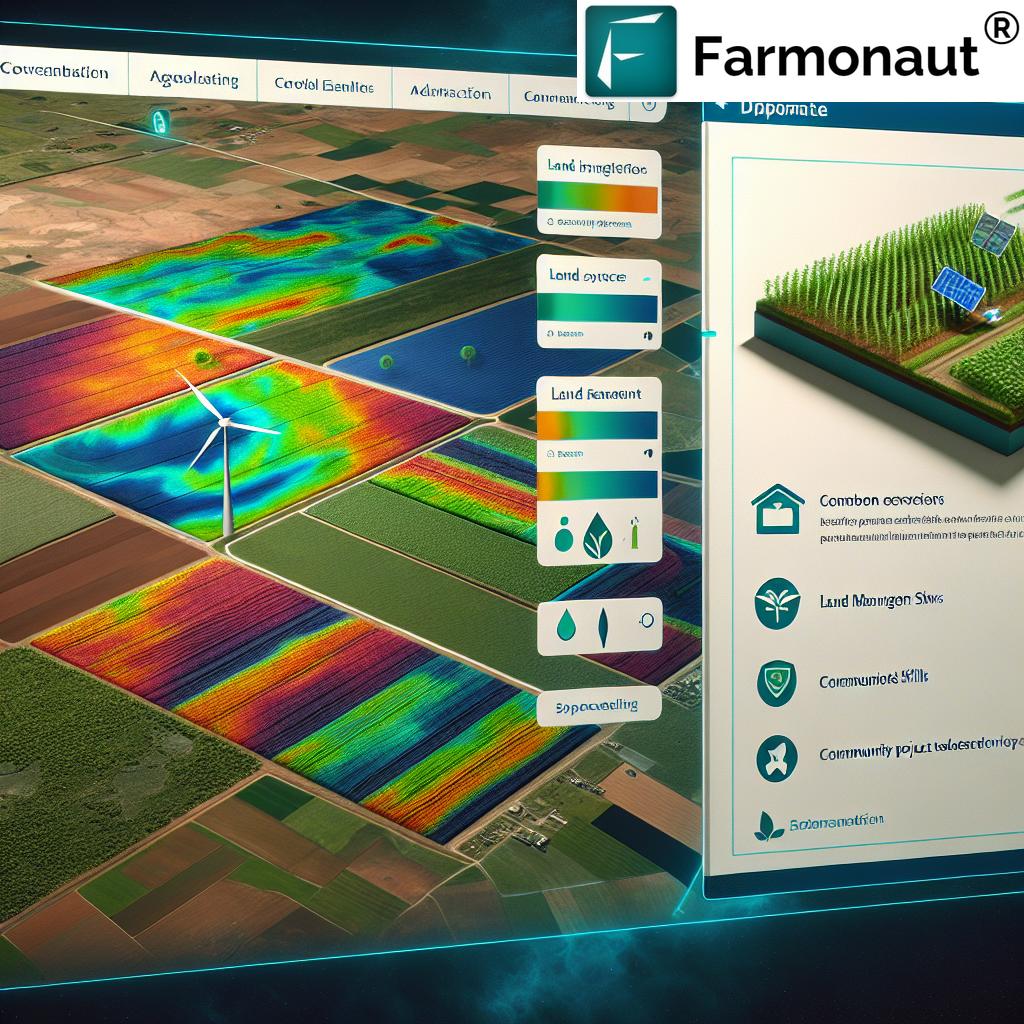Soil Moisture Sensor: 7 Powerful Ways to Boost Farm Yields
Table of Contents
- Introduction
- Types of Soil Moisture Sensors
- 7 Powerful Ways Soil Moisture Sensors Boost Farm Yields
- Comparison Table: Benefits & Impact of Soil Moisture Sensors
- 1. Real-Time Monitoring & Precision Irrigation
- 2. Nutrient Management and Fertilizer Efficiency
- 3. Ensuring Crop Health and Plant Vitality
- 4. Resource Conservation and Environmental Impact
- 5. Data-Driven Decision Making: Smart Farm Management
- 6. Sustainable Farming and Future Trends
- 7. Cost Savings and Economic Benefits
- Farmonaut’s Satellite-Based Soil Moisture Monitoring & More
- Challenges & Considerations for Soil Moisture Sensors
- FAQ: Soil Moisture Sensors in Agriculture
- Farmonaut Subscription Plans
- Conclusion
Introduction: The Power of Soil Moisture Sensors in Modern Agriculture
In today’s ever-evolving agriculture sector, precision, efficiency, and sustainability have become the benchmarks of successful farm management. At the heart of this transformation lies soil moisture sensors, pivotal tools enabling us to monitor the amount of water present in soils with unprecedented accuracy. By leveraging real-time data on soil moisture, we can optimize irrigation, enhance crop health, reduce waste, and ultimately, significantly boost farm yields.
Modern soil moisture monitoring in agriculture exemplifies how technology, innovation, and data-driven decisions are reshaping traditional farming practices worldwide. Through the use of resistive, capacitive, time domain reflectometry (TDR), and frequency domain reflectance (FDR) sensors, we gain granular insights into soil health and dynamics. This empowers us, as farmers and agribusinesses, to irrigate more efficiently, conserve resources, and promote sustainable agricultural practices.
In this comprehensive guide, we’ll explore the different types of soil moisture sensors, their technological principles, and 7 powerful ways these sensors can revolutionize your crop management to achieve outstanding yield improvements. We’ll also discuss the role of leading-edge solutions such as Farmonaut’s satellite-based crop health and soil moisture monitoring, and provide practical insights for integrating soil sensor technology into your own operations.
Types of Soil Moisture Sensors: The Science Behind Accurate Soil Moisture Monitoring
Selecting the right soil moisture sensor is essential for obtaining precise data. Let’s briefly review the main types of sensors, their measurement principles, and their roles in modern agriculture:
1. Resistive Sensors
- Work by measuring electrical resistance between two electrodes inserted into the soil.
- Resistance correlates with moisture content, since water conducts electricity and reduces resistance.
- Effects of salinity and temperature variations can impact accuracy, requiring regular calibration and maintenance.
2. Capacitive Sensors
- Use the dielectric properties of soil, measuring changes in capacitance as moisture fluctuates.
- Provide higher stability across different soil types and environments than resistive models.
- Popular due to their accuracy and lesser sensitivity to salinity.
3. Time Domain Reflectometry (TDR) Sensors
- Function by measuring the time an electromagnetic pulse takes to travel through the soil.
- Travel speed depends on the soil’s dielectric constant, which increases with water content.
- Offer exceptional accuracy and reliability, but are typically more complex and costly.
4. Frequency Domain Reflectance (FDR) Sensors
- Operate on principles similar to TDR, but use frequency-based measurements instead of time.
- Tend to be simpler, less expensive, and suitable for various agricultural applications.
Harnessing these measurement principles for soil moisture monitoring in agriculture, we enable precise irrigation management, efficient resource use, and sustainable farm management.
7 Powerful Ways Soil Moisture Sensors Boost Farm Yields
The benefits of integrating soil moisture sensors and wireless soil sensor technology in our fields transcend just monitoring. Here’s how these sensors, combined with agricultural sensor data analysis and precision irrigation technology, drive higher yields and reduced costs:
- Real-Time Monitoring & Precision Irrigation
- Nutrient Management and Fertilizer Efficiency
- Ensuring Crop Health and Plant Vitality
- Resource Conservation and Environmental Impact
- Data-Driven Decision Making: Smart Farm Management
- Sustainable Farming and Future Trends
- Cost Savings and Economic Benefits
Comparison Table: Key Benefits and Quantitative Impact of Soil Moisture Sensors
| Benefit/Action | Estimated Yield Improvement (%) | Estimated Water Savings (%) | Technological Feature Involved |
|---|---|---|---|
| Precision Irrigation Scheduling | 10–20% | 20–40% | Real-Time Sensor Data, Automated Irrigation Alerts |
| Reduced Water Usage | 5–10% | 25–50% | Wireless Monitoring, Soil Moisture Thresholds |
| Enhanced Crop Health & Stress Detection | 8–15% | 10–15% | TDR & FDR Sensing, Remote Data Analytics |
| Optimized Nutrient Management | 10–18% | 5–12% | Integration with Fertilizer Application Systems |
| Minimized Runoff & Leaching | 4–8% | 5–10% | Consistent Monitoring & Alerts |
| Resource & Labor Efficiency | 6–12% | 15–25% | Wireless & Remote Monitoring, App Integration |
| Environmental Conservation | 5–9% | 12–22% | Data-Driven Decision Making, Farm Management Integration |
1. Real-Time Monitoring & Precision Irrigation with Soil Moisture Sensors
At the core of every farming operation is water—the lifeblood of plant growth. By deploying soil moisture sensors, we receive real-time data on soil water content at various depths. This allows us to:
- Determine precisely when to irrigate, reducing guesswork and ensuring plants receive adequate moisture at critical growth stages.
- Automate irrigation through precision irrigation technology that responds directly to sensor readings.
- Prevent over-irrigation and minimize nutrient leaching and water wastage.
Example: Imagine irrigating only when soil moisture falls below a defined threshold, saving water, reducing energy costs, and maximizing crop yield optimization.
Learn how Farmonaut’s platform provides remote soil moisture monitoring, AI-powered irrigation advisories, and real-time alerts accessible from your mobile or desktop. Explore our Farmonaut Crop Plantation & Forest Advisory features here.
2. Nutrient Management and Fertilizer Efficiency
Soil moisture content directly affects the uptake of nutrients by crops. Using sensors to monitor moisture, we can optimize fertilizer applications by timing them when plants can best absorb nutrients. This approach means:
- Fewer fertilizer losses to runoff or volatilization.
- Improved root zone nourishment for stronger, healthier crops.
- Cost savings by reducing or redistributing fertilizer inputs.
Fusing soil moisture monitoring in agriculture with fertilizer management platforms minimizes input costs and boosts sustainability.
Tip: Integrate your moisture data with nutrient tracking for even greater efficiency. Try Farmonaut’s blockchain-based traceability system for secure, transparent tracking from farm to consumer, ensuring optimal nutrient application and maximum produce quality.
3. Ensuring Crop Health and Plant Vitality
Consistent soil moisture is essential for plant health, robust root systems, and drought resilience. Through real-time sensing and monitoring:
- We detect plant stress early, enabling timely interventions—be it irrigation, pest control, or weather-adjusted management.
- Healthy moisture levels foster resilient crops, reducing disease vulnerability and promoting even growth.
- With constant data analysis, we optimize every stage of crop development, translating into higher yields and sustainable farm profitability.
Wireless soil sensor technology—like remote monitoring and automated alerts—amplifies our capacity to maintain soil health across even the largest fields.
4. Resource Conservation and Environmental Impact
With water scarcity a growing concern, conserving this precious resource is paramount. Soil moisture sensors empower us to:
- Reduce irrigation water usage by up to 20–40%, ensuring that every drop counts.
- Minimize environmental impact by lowering runoff and preventing contamination of nearby streams and groundwater.
- Comply with environmental regulations and promote sustainable agriculture practices on our farms.
With Farmonaut’s carbon footprinting tools, we track and minimize the overall environmental impact of our farming operations. Coupled with accurate soil data, this sets a new standard for sustainable agriculture.
5. Data-Driven Decision Making: Smart Farm Management
The true strength of soil moisture sensors lies in agricultural sensor data analysis. By integrating moisture readings with weather forecasts, satellite imagery, and historical crop performance, we can:
- Optimize every key decision point: when and how much to irrigate, fertilize, and protect crops from stress.
- Identify soil variability within and across fields, leading to tailored management for maximum productivity.
- Access data remotely using platforms like Farmonaut, which delivers actionable insights straight to our mobile devices or desktops.
Harness the power of large-scale farm management tools for efficient resource deployment and comprehensive data-driven oversight—critical for both individual farmers and agribusinesses.
With smart integration, we unlock the next frontier of farm irrigation management—increasing yields, conserving water, and building sustainable, resilient operations.
6. Sustainable Farming and Future Trends
Sustainable farming practices are only achievable with the support of precise, scalable technologies. Soil moisture monitoring in agriculture is rapidly evolving:
- Biodegradable sensors reduce electronic waste and simplify sensor disposal, enhancing environmental responsibility.
- Wireless and remote soil moisture monitoring enables real-time oversight without intensive labor—just set it up, and monitor your farm’s status from anywhere in the world.
- AI, machine learning, and blockchain promise even smarter, more secure decision making and traceability—empowering farmers and consumers alike.
As technology continues to progress, integrating these advances ensures our operations remain at the cutting edge of modern, efficient, and environmentally responsible agriculture.
For developers and agritech businesses:
Leverage Farmonaut’s Satellite & Weather Data API with comprehensive API documentation to build custom solutions for soil moisture analytics, precision irrigation, and crop management automation.
7. Cost Savings and Economic Benefits
Incorporating soil moisture sensors into our agricultural workflows brings substantial economic benefits:
- Reduced operational costs by minimizing unnecessary irrigation and fertilizer usage.
- Lower dependence on manual labor thanks to automation and remote management.
- Increased profits through higher and more consistent yields.
- Prevention of input overuse and the associated environmental fees or regulatory penalties.
Farm credit, loans, and insurance access is also streamlined with accurate, remotely-verified farm data—explore the possibilities with Farmonaut’s crop loan and insurance verification tools.
Farmonaut’s Satellite-Based Soil Moisture Monitoring & More
Farmonaut brings the most advanced soil moisture monitoring in agriculture to your fingertips—no expensive in-field hardware, wiring, or complicated installations.
Key Features of Farmonaut’s Platform:
- Satellite-Based Crop and Soil Monitoring: Get high-frequency, field-level updates on soil moisture content, crop health (NDVI, EVI), and weather metrics.
- Jeevn AI Advisory System: Receive personalized, AI-driven recommendations on irrigation, input application, and farm activity scheduling—backed by real-time satellite and sensor data.
- Web, Android, & iOS Apps: Enjoy 24×7 access to your farm’s key indicators from wherever you are, supporting true remote soil moisture monitoring.
- Blockchain Product Traceability: Build consumer trust and ensure food security with transparent, secure crop journey records—learn more on our Product Traceability page.
- Resource Management, Fleet Tracking, & Carbon Footprinting: Streamline operations and reduce environmental impact with cutting-edge tools. Try our Fleet Management features to efficiently track and schedule agricultural equipment.
- Scalable for Everyone: Farmonaut serves individual farmers, large agribusinesses, cooperatives, and government institutions, making advanced soil and crop monitoring accessible to all.
Benefit from affordable, flexible subscription plans and API access tailored for different needs, operational scales, and regions.
Challenges & Considerations for Soil Moisture Sensors
While the benefits of soil moisture sensors are substantial, it’s vital we remain aware of certain challenges:
- Calibration & Maintenance: To ensure data accuracy, electrochemical sensors (like resistive models) require regular calibration and periodic maintenance. Dirt buildup, soil salinity, and temperature shifts can affect measurements.
- Upfront Cost: High-quality TDR and wireless sensors may be financially challenging for small-scale operations. However, satellite- and API-driven solutions (like Farmonaut) help keep precision monitoring accessible.
- Data Interpretation: Effective use of sensor data requires some agronomic understanding. Staff or farmer education, as well as intuitive app interfaces, are key to maximizing return on investment.
- Sensor Placement: Variations in soil composition mean that placing sensors at representative locations and depths is critical for reliable field-wide insight.
Choosing the right technology, following best deployment practices, and partnering with reliable data analytics platforms are the cornerstones of overcoming these challenges for lasting farm success.
Note: Farmonaut is an agricultural technology company—not a marketplace, farm input supplier, machinery manufacturer, or regulatory authority. Instead, our strength lies in offering affordable, accessible, and holistic digital solutions to transform traditional farming worldwide.
FAQ: Soil Moisture Sensors in Agriculture
What is a soil moisture sensor and how does it work?
A soil moisture sensor is a device that measures the water content of soil, enabling precision irrigation and crop management. Sensors may use electrical resistance, capacitance, TDR, or FDR principles to assess moisture levels.
How do soil moisture sensors improve crop yields?
By providing real-time data on soil water status, sensors allow farmers to irrigate at optimal times, prevent both under- and over-watering, and enhance nutrient uptake—resulting in healthier plants and higher, more stable yields.
Can soil moisture sensors reduce water costs?
Yes! Through precision irrigation technology, water usage can be reduced by 30% or more, leading to substantial savings on energy and resources in both small and large field operations.
How do I access soil moisture data for my farm remotely?
Platforms like Farmonaut provide satellite-based soil moisture monitoring, delivering updates through iOS, Android, or web apps—no need for expensive physical sensors or manual measurement. Get started here.
Are there challenges with soil moisture sensors?
While accuracy, calibration, and cost can pose challenges—especially with in-field sensors—satellite-based and platform-driven solutions (like Farmonaut) minimize these hurdles, offering scalable, user-friendly management tools.
Which sensor type is best for my farm?
It depends on your needs and resources. Capacitive and FDR sensors offer good value and stability for most conditions. TDR sensors are highly accurate but more expensive. For large-scale monitoring, satellite and app-based approaches offer the best balance of efficiency, coverage, and cost-effectiveness.
How can I integrate soil moisture data with other farm management systems?
You can connect your sensor data with APIs and farm management platforms, enabling automated decisions, advanced analytics, and seamless records for loans or sustainability compliance. Learn about Farmonaut’s open API here and developer resources.
Farmonaut Subscription Plans
Ready to start your precision agriculture journey? Farmonaut offers subscription-based access to a suite of satellite-driven soil moisture, crop health, and farm management tools, suitable for individual farmers to large agribusinesses. View package details, pricing, and sign up instantly below:
Conclusion: Embrace the Future of Precision Farming with Soil Moisture Sensors
Soil moisture sensors have revolutionized agriculture, empowering us with the real-time data and precision needed to drive yield optimization, water conservation, and truly sustainable farming practices. Whether using in-field devices or state-of-the-art platforms like Farmonaut’s remote soil moisture monitoring, these technologies help us unlock consistent profits, environmental stewardship, and resilience in an increasingly unpredictable climate.
The future of agriculture is digital, data-driven, and sustainable. As soil moisture monitoring advances—blending wireless, biodegradable, and satellite solutions—we at Farmonaut remain committed to making high-tech, precision agriculture accessible and affordable for all. Join the movement towards smarter, more productive, and eco-friendly farming today.





